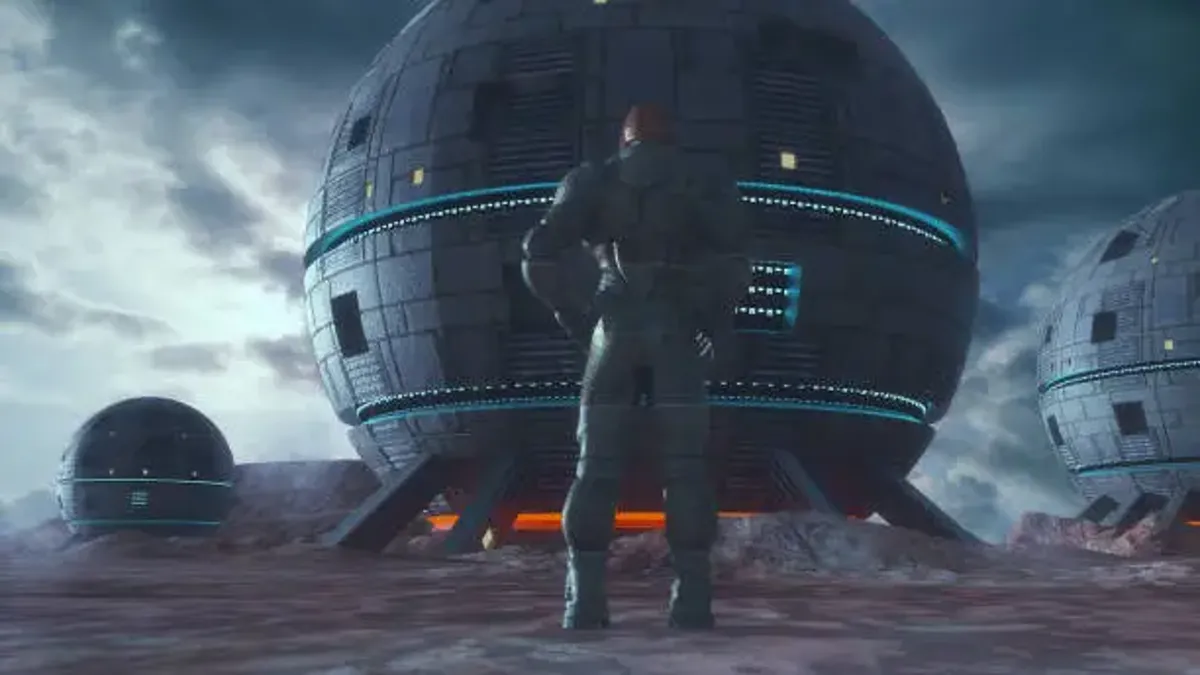When people search for “Super Metroid ROM hacks,” they’re not just looking for old game files; they’re searching for the rebirth of a legend. In the first hundred words, let’s clarify what this means: a Super Metroid ROM hack is a modified version of Nintendo’s 1994 masterpiece Super Metroid, created by passionate fans who use reverse engineering, map editing, and design artistry to build entirely new worlds inside the framework of the original game. These hacks redefine how people experience the Metroid universe — offering new stories, brutal challenges, fresh mechanics, and unexpected emotional depth. In essence, they keep a 30-year-old classic alive through constant reinvention.
Super Metroid ROM hacks are not mere nostalgia; they are living testaments to community creativity — collaborative works where coding meets storytelling, and where players become architects of their own adventures.
The Legacy of Super Metroid — A Game Built for Modification
Super Metroid was released in 1994 for the Super Nintendo Entertainment System (SNES). It was revolutionary for its atmospheric design, non-linear exploration, and haunting soundtrack. What made it truly timeless, however, was its structure. The game’s level design was so elegantly interconnected that it encouraged players to experiment, backtrack, and rethink progression.
That design made the game not just playable — but editable.
When fan developers discovered that they could manipulate the ROM (Read-Only Memory) file, they unlocked an entirely new medium of expression. Super Metroid’s code became a creative playground, allowing hackers to rearrange rooms, add mechanics, introduce custom sprites, and even write new narrative scripts.
“Super Metroid is the perfect canvas — structured enough to guide you, open enough to let you dream,” said one veteran modder.
How ROM Hacking Works
ROM hacking begins with a legal backup copy of a game, which is then modified using a combination of software tools. For Super Metroid, the most commonly used editing software is SMILE (Super Metroid Integrated Level Editor). SMILE allows hackers to:
- Edit room geometry and enemy placement
- Adjust item locations and power-up balance
- Replace graphics and tilesets
- Modify AI behavior and physics
- Rewrite story dialogue and in-game text
The resulting “patch” — typically distributed as an IPS or BPS file — is applied to a clean ROM, creating a new experience while preserving the original game’s codebase.
| Tool | Function | Used For |
|---|---|---|
| SMILE | Map editing and item placement | Creating new environments |
| Lunar IPS / Floating IPS | Patch application | Distributing hacks |
| Tile Layer Pro | Graphics and sprite editing | Redesigning environments |
| Hex Editor | Script and logic modification | Custom physics or dialogue |
| Snes9x / BSNES | Emulation | Playtesting and bug checking |
This structure makes hacking both art and science — requiring coding precision and design sensitivity.
The Birth of the ROM Hacking Community
By the early 2000s, online communities like Metroid Construction and Romhacking.net had become digital workshops for hobbyist developers. Dozens of early hacks emerged — small edits, custom levels, rebalanced item placements. But as technology evolved and collective expertise grew, projects expanded in scope.
The community operated like an informal studio — shared resources, collaborative beta testing, open critique, and constant iteration. Many developers were inspired not by profit but by passion. They wanted to build the game they always imagined.
“Nintendo gave us the skeleton,” said a fan creator. “We gave it a second soul.”
The Philosophy Behind Hacking Super Metroid
Unlike conventional game design, ROM hacking isn’t about starting from scratch — it’s about reinterpreting legacy. Each hack reflects a dialogue between the original developers and the fan community. The philosophy centers on four principles:
- Respect the core mechanics. The movement, pacing, and flow that define Super Metroid remain sacred.
- Reward exploration. Every room should surprise and challenge intuition.
- Subvert expectation. Turn familiar areas into new puzzles; make players unlearn what they know.
- Honor the atmosphere. The isolation, melancholy, and quiet triumphs must endure.
The best hacks capture this paradox — they are both faithful and rebellious, reverent yet disruptive.
Categories of Super Metroid ROM Hacks
Over the years, hackers have developed diverse subgenres, each appealing to a different type of player.
| Category | Description | Typical Example | Difficulty Level |
|---|---|---|---|
| Full Conversions | Complete redesigns with new maps, story, and art | Super Metroid: Redesign, Super Metroid Ascent | Hard to Very Hard |
| Quality-of-Life Hacks | Small tweaks improving controls or visuals | Super Metroid Redux, Hyper Metroid QOL Edition | Moderate |
| Challenge Hacks | Focused on skill mastery and minimal saves | Super Metroid Impossible | Brutal |
| Story-Based Mods | Introduce new narrative arcs | Metroid Legacy, Super Metroid Origins | Medium |
| Crossover / Parody Hacks | Blend universes or humor | Super Marioid, ZeldaMetroid Fusion | Mixed |
Each category caters to different sensibilities — from players seeking nostalgia to those craving chaos.
The Titans of the Genre: Landmark Super Metroid Hacks
1. Super Metroid: Redesign
Arguably the most ambitious hack ever created, Redesign rebuilds every inch of Zebes. It introduces new physics, redesigned power-ups, and puzzles that demand intimate knowledge of the original’s mechanics. For some, it’s exhilarating; for others, maddening.
“It’s not Super Metroid harder — it’s Super Metroid reimagined,” said a streamer who spent 40 hours finishing it.
2. Hyper Metroid
Balancing difficulty and accessibility, Hyper Metroid combines beautiful level layouts with rebalanced combat and an expanded lore backdrop. It respects the rhythm of exploration — the sense that each item unlocks a new way of thinking.
3. Super Metroid Ascent
A modern masterpiece, Ascent is known for vertical exploration and cinematic pacing. Every area feels alive, connected by environmental storytelling rather than dialogue.
4. Super Metroid: Nature
A hack that turns the entire planet into an organic entity — roots, veins, and living corridors. It’s less about combat, more about ambiance.
5. Super Metroid Rotation
A clever novelty hack that literally rotates the entire map 90 degrees. What was once up is now sideways, forcing players to unlearn muscle memory.
Why People Still Play and Create ROM Hacks in 2025
Decades after its release, Super Metroid continues to inspire a kind of sacred obsession. For modern players, hacking offers both preservation and progression — the ability to keep classic design alive while pushing it forward.
Reasons Behind the Enduring Appeal:
- Creative Freedom: Fans become developers without needing corporate permission.
- Community Recognition: Success is measured in passion, not profit.
- Accessibility: Anyone with a computer and patience can start modding.
- Cultural Resistance: It’s an act of ownership — reclaiming art from corporations.
“Hacking is the ultimate fan letter,” said a longtime player. “It’s love written in code.”
The Technical Challenge of Designing a Hack
Creating a good Super Metroid hack is daunting. Developers must maintain balance — too easy, and it feels unearned; too hard, and it breaks flow. Level architecture, enemy AI, and item progression must interlock perfectly.
Core Challenges Faced by Hackers:
- Memory Limits: The SNES architecture allows limited data per map.
- Physics Engine Constraints: Gravity and collision can’t easily be rewritten.
- Testing Complexity: Each new mechanic risks introducing softlocks or glitches.
- Art Integration: Custom tilesets must align with the existing color palette.
Successful hacks achieve elegance under constraint — creativity born from limitation.
Ethics and Legality: The Gray Zone of ROM Hacks
ROM hacking exists in a legal gray area. Distributing modified game files directly is illegal, as the original code belongs to Nintendo. However, distributing patches — which contain only the modifications — is generally tolerated.
Developers emphasize ethical guidelines:
- Never distribute the base ROM.
- Credit original developers and fellow hackers.
- Keep hacks non-commercial.
The unspoken agreement between fans and copyright holders has sustained the scene for decades. It’s a fragile peace built on mutual respect — fans preserve legacy without claiming ownership.
The Role of Emulation and Accessibility
Without emulators like Snes9x or BSNES, the ROM hacking scene wouldn’t exist. Emulators not only preserve old games but allow developers to test modifications in real time. With modern tools, hacks can now run at higher resolutions, with remastered soundtracks and controller compatibility.
In 2025, players can even load hacks on handheld emulation devices or modded consoles — ensuring that Super Metroid’s legacy travels across generations and screens.
The Cultural Importance of ROM Hacks
ROM hacks are not just fan projects; they’re cultural artifacts. They preserve the language of old design while infusing it with new dialects. In an era where corporate remakes often sanitize classics, fan modifications restore imperfection, experimentation, and risk.
“ROM hacks remind us that games are living texts,” said a game historian. “They’re rewritten by those who love them most.”
They also challenge notions of authorship. In literature, reinterpretation is tradition — from Shakespeare adaptations to modern retellings. In gaming, ROM hacking plays that same role, blurring the line between player and creator.
Aesthetics of Design — The Art of Balance
The beauty of a great hack lies in its restraint. The best creators understand pacing — when to frustrate, when to reward, when to awe. They design not just for challenge, but for rhythm.
Artistic Traits of Top Hacks:
- Environmental Storytelling: Worlds that tell their tale through ruin and architecture.
- Echoes of Familiarity: Recognizable landmarks reshaped with purpose.
- Controlled Difficulty: Challenge that invites persistence, not punishment.
- Subtle Innovation: New mechanics introduced naturally within old frameworks.
Super Metroid’s emotional power lies in its silence. Great hacks honor that silence while adding their own voice.
The Emotional Landscape — Why It Resonates
Playing a ROM hack of Super Metroid isn’t just gaming; it’s rediscovery. Every pixel feels familiar yet alien. The sensation is similar to returning to one’s childhood home and finding new rooms that weren’t there before.
“It’s nostalgia sharpened into curiosity,” wrote one fan. “You think you know every hallway, and then the floor gives way.”
For creators, the emotional reward is deeper: the act of building within an old masterpiece is a declaration of belonging — a way to converse with the original designers through time.
Community Dynamics — Collaboration Over Competition
ROM hacking communities thrive on mentorship. Experienced modders share tutorials, open-source tiles, and custom sprites. Artists collaborate with coders. Musicians remix ambient themes into new soundscapes.
Common Community Practices:
- Shared Asset Libraries: Free-to-use art for aspiring creators.
- Testing Partnerships: Cross-feedback among developers.
- Modding Challenges: Timed contests to produce mini-hacks.
- Public Documentation: Detailed wikis explaining file structures.
The atmosphere is rarely about ego. It’s about keeping the torch lit — ensuring that Super Metroid remains a living ecosystem.
The Future of Super Metroid ROM Hacks
As tools improve, hacks are evolving beyond the original SNES limits. Some projects now integrate expanded chips, custom AI scripting, and modern shader emulation to simulate 3D effects within 2D maps. Future hacks might even use procedural generation, merging classic design with contemporary technology.
Potential Directions for the Future:
- AI-assisted level design tools for faster iteration.
- Cross-platform compatibility for PC, Switch, and handheld emulators.
- Narrative hubs connecting multiple fan-made universes.
- Online cooperative modes for shared exploration.
The future of ROM hacking is not nostalgia; it’s innovation born from memory.
Comparing Original Super Metroid vs. Modern Hacks
| Feature | Original Game (1994) | Modern Hacks (2025) |
|---|---|---|
| Graphics | 16-bit pixel art | Enhanced textures, layered lighting |
| Level Design | Linear yet explorative | Non-linear labyrinths with puzzle flow |
| Difficulty | Moderate | Ranges from casual to punishing |
| Storytelling | Minimalist | Expanded lore and custom dialogue |
| Replay Value | High | Virtually infinite with mod variety |
While the original remains untouchable in its artistry, the hacks show what the community can achieve when love meets ingenuity.
Quotes That Define the Scene
“Super Metroid isn’t just a game anymore — it’s a framework for imagination.” — Fan Creator
“ROM hacking is archaeology in reverse. We don’t dig up the past; we rebuild it.” — Modding Historian
“Every patch is a personal conversation with Nintendo — polite, persistent, and profoundly creative.” — Veteran Coder
“We hack because we still care.” — Community Motto
Challenges Ahead — Preservation and Recognition
As ROM hacks grow more sophisticated, they face challenges of preservation, crediting, and archiving. Without formal recognition from major companies, many brilliant works risk vanishing into forgotten file servers.
Digital archivists within the community now create catalogues documenting major releases, ensuring that fan labor isn’t lost to time. Some universities even study ROM hacks as examples of participatory art and emergent storytelling.
Why Super Metroid ROM Hacks Matter
Super Metroid ROM hacks matter because they prove something profound: art doesn’t end when the credits roll. A masterpiece can be rewritten, not replaced. Every fan who edits a map, adjusts a puzzle, or redraws a sprite becomes part of a collective authorship stretching across decades.
These projects aren’t competition for the original; they are continuations. They show that creativity doesn’t belong only to studios — it belongs to people who love enough to keep creating.
Conclusion — A Living Legacy
Super Metroid ROM hacks are more than fan projects; they are acts of devotion, reinterpretation, and rebellion against creative finality. They remind us that art doesn’t age — it evolves through those who refuse to let it die.
In every patched file and reimagined world, a community whispers the same message: The story isn’t over yet.
“We’re not changing Super Metroid,” one creator said. “We’re continuing it — one pixel at a time.”
Through those pixels, the spirit of exploration endures — reborn, reframed, and forever rediscovered.
Frequently Asked Questions
1. What is a Super Metroid ROM hack?
It’s a modified version of the classic SNES game Super Metroid, redesigned by fans using editing tools.
2. Are ROM hacks legal?
Sharing patches is legal; sharing the original ROM is not. Players must own a legitimate copy of the game.
3. How do I play a ROM hack?
You apply a patch file (IPS or BPS) to a clean ROM and run it using an SNES emulator.
4. Are all hacks extremely difficult?
No. Some are designed for storytelling or exploration, while others, like Impossible, challenge elite players.
5. Why do people still make ROM hacks?
Because passion never expires — it’s how communities preserve and expand what they love.







